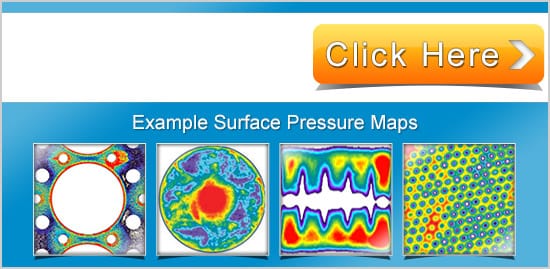A.B. Liggins, W.R. Hardie and J.B. Finlay.
Purpose
To investigate the limits of pressure- and spatialresolution possible with Fuji film, using digital-analysis methods.
Method, Results and Discussion
Digital imagecapture is a popular method for calibrating and analyzing Fuji film stains; the resulting stain-images are manipulated numerically to produce false-colour pressure-maps. Stain-granularity limits the spatial- and pressure-resolutions of these maps, as an area (on a stain) which is at a single, uniform, pressure presents a range of optical-densities; however, little data on this aspect appear in the literature. Studies of human joints, both intact and implants, can involve small contact-areas and high pressure-gradients; these conditions make the resolution-properties of any transducer critically important. Therefore, the objective of this work was to quantify these properties for Fuji film.
25-mm-diameter calibration-stains were produced from “superlow” grade Fuji film, for twelve uniform pressures between 0.25 and 3 MPa; these stains were digitized, using a PC-based digitizing system and the resulting data used to produce a fifth-order calibration-curve. A further six “test” calibration-stains were produced at each of four nominal pressures (0.5, 1.0, 1.77 and 2.5 MPa); these stains were also digitized and the resulting images analyzed as follows.
Custom-written software was used to obtain the mean pixel-value (optical density) for consecutive sample-areas across a 19 x 15 mm area on each stain-image; five different sample-area-sizes were employed, ranging from 0.1 x 0.08 mm to 2 x 2 mm. At each nominal value of applied pressure, these data were used to produce overall values of mean pixel-value (MO) and standard deviation (SP), for the population of six stain-images, for each of the five samplearea sizes. Valid pressure-ranges for each population of stains were determined from the fifth-order calibration-curve, using MO ± SP; these ranges were then used to determine the pressure-resolutions for each sample-area-size (spatial-resolution).
The results showed that spatial- and pressure-resolution are inversely related and that, for example, the maximum spatialresolution (0.1 x 0.08 mm sample-area) provides only four valid pressure-intervals (given by MO±SP), represented by different colours, on subsequent pressure-maps; this number is less than that normally presented in the literature. In addition, it was found that pressure-interval-size increased with increasing pressure, as opposed to the uniform-intervals which are common in the literature.
Conclusion
Spatial- and pressure-resolution are inversely related and are limited by stain-granularity.
Significance
Previously-unavailable resolution-data have been obtained, allowing the accurate definition of the parameters required for producing false-colour pressure-maps.



